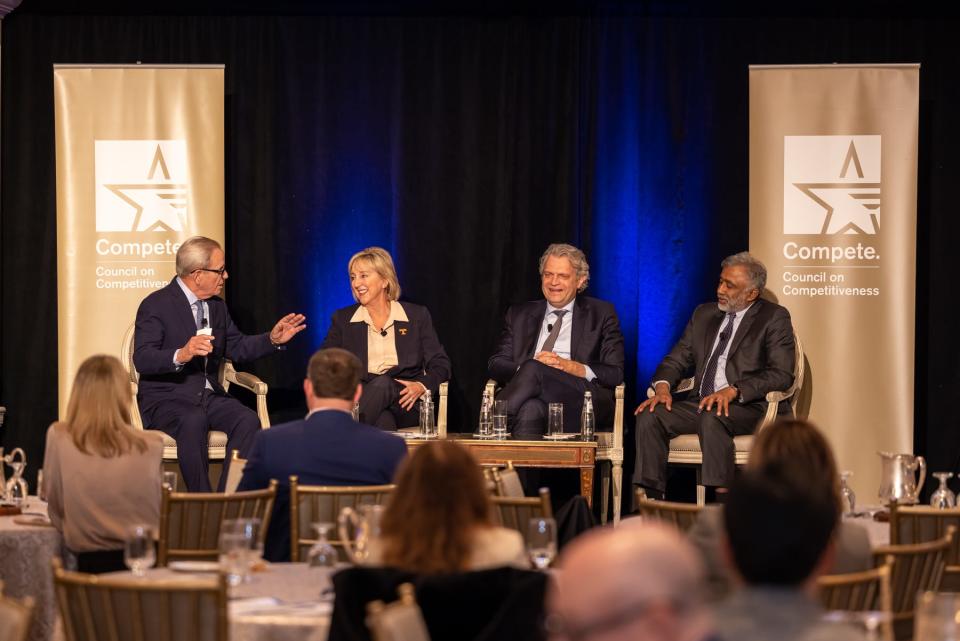Why the University of Tennessee and ORNL are asking scientists for $20 million ideas
The University of Tennessee System and Oak Ridge National Laboratory are looking for two brilliant $20 million ideas.
The two research projects they're looking for are meant to tackle some of the biggest research topics out there, from sustainable energy to biotechnology and manufacturing.
In the space of two pages, researchers must propose a research area that could make the two institutions national leaders on important innovation and could marshal a team of 20 researchers and at least 25 doctoral students over five years.
Proposals are due to the University of Tennessee-Oak Ridge Innovation Institute by Sept. 15, and the winning ideas will be selected by December.
The $20 million in funding is not simply a grant, but comes with the expectation that researchers will secure around $15 million in additional external funding.
It takes at least two years to get from selecting the projects, called convergent research initiatives, to actually beginning research, interim executive director of the institute David Sholl said at a town hall Aug. 21.
Sholl said new research faculty would be hired, with a potential path towards tenured positions at UT. The projects also will include dozens of doctoral students. Around 125 graduate students work with ORNL, and the lab hopes to increase that figure to 500 students.
UT Oak Ridge Institute is crown of strategic partnership
The University of Tennessee-Oak Ridge Innovation Institute was launched in 2021 between ORNL and UT, the lab's largest research partner.
The Bredesen Center, named for former Tennessee governor Phil Bredesen, has offered three doctoral programs under joint advising by the two institutions since 2010.
More than 200 faculty at the university are jointly appointed at ORNL.
UT offers the lab a chance to train the next generation of scientists, while the lab offers UT its superlative facilities, including the Spallation Neutron Source, a world-record-breaking accelerator, and Frontier, the world's fastest supercomputer. Together, the university and the lab make East Tennessee a national center of energy and manufacturing research.
The $20 million incentive for these research projects reflects the ample funding the institute itself has received. In its first year, it received a $20 million federal grant from the Department of Energy. It has since received over $80 million in state funding.
Anahita Khojandi, an associate professor of industrial and systems engineering, has seen firsthand how students benefit from working with the lab, but also how the lab benefits.
"What we bring to the table, in addition to our expertise, is also this access to students and being able to train the next generation," Khojandi said. "What they are daring us to do is to think big and they will be willing to invest in it."
Large research projects between UT and ORNL force researchers out of their comfort zones by bringing interdisciplinary teams together, Khojandi said.
"A musician, a historian, an engineer and a mathematician walk into a bar. That can be the beginning of a joke, but that can also be the start of a convergent research project," Khojandi said. "You really need people from different disciplines; you need people who have been trained in their respective disciplines who see their work differently to come together and share their vision."
At national labs, researchers are more accustomed to working across fields. Bradley Jared, an associate professor of mechanical engineering, worked at Sandia National Laboratory in New Mexico before joining UT faculty in 2020.
He said UT and ORNL have a high level of collaboration, where professors and students seem always to have some project that includes the lab.
When he teaches classes on 3D printing, he works to get his students into the Manufacturing Demonstration Facility at ORNL.
"I tell my students, 'Listen, people come from around the world to visit this facility, and it's 20 minutes from your classroom,'" Jared said. "Those are great opportunities to go see things where people are doing research, and to learn and to get skills and opportunities they wouldn't have otherwise."

How one UT-Oak Ridge researcher is preparing a proposal
Tom Zawodzinski splits time between the university and the lab as a UT-ORNL Governor's Chair faculty. He's spent his career on electrochemical research, including batteries and fuel cells, which use chemicals like hydrogen to produce electricity.
His recent research into repurposing batteries from Nissan Leafs was funded through the Science Alliance, a collaboration between UT and ORNL dating back to the 1980s, which was integrated into the University of Tennessee-Oak Ridge Innovation Institute last year.
Now, he is looking to put together a team of interdisciplinary researchers who can tackle developing energy materials. He said collaboration across fields is vital to innovation.
"If you don't do crazy things today, you won't be ready for the future," Zawodzinski said. "Sometimes, you just don't know if you can make something a certain way until you try to make it."
Daniel Dassow is a reporting intern focusing on trending and business news. Phone 423-637-0878. Email daniel.dassow@knoxnews.com.
Support strong local journalism by subscribing at knoxnews.com/subscribe.
This article originally appeared on Knoxville News Sentinel: University Tennessee, Oak Ridge National Lab seek new research ideas

